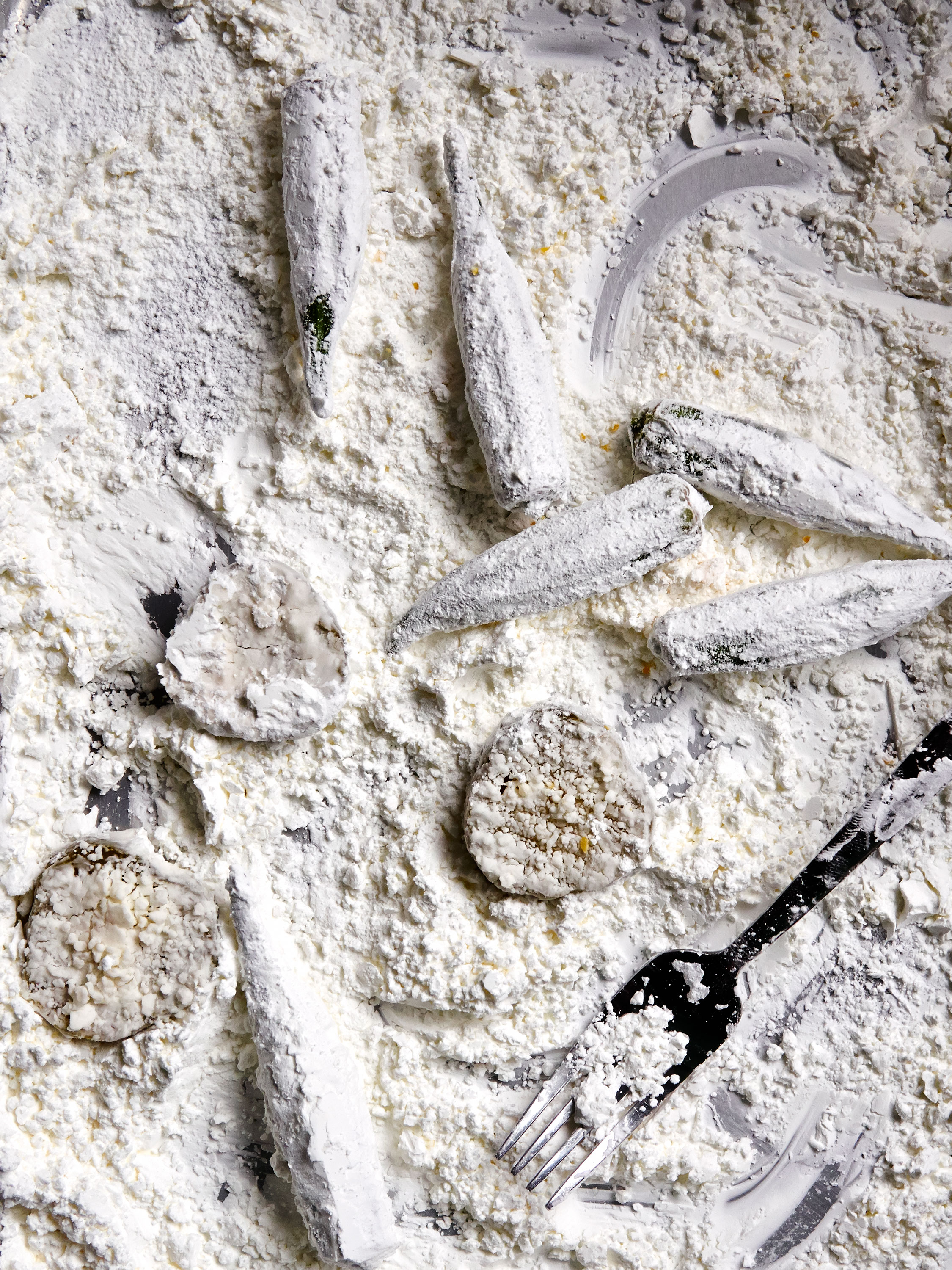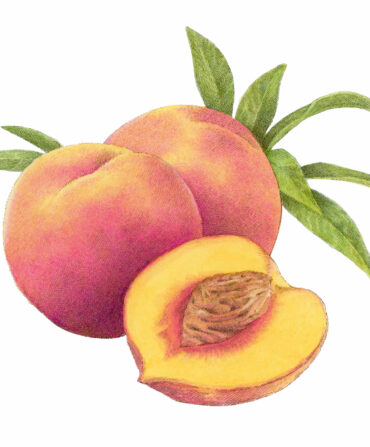Master Fry Batter Mix
Before the frying comes the coating. Make a batch of this dry mix and all you’ll need is fresh buttermilk for an anytime batter. Think of it as a canvas that you can customize to your liking. For more rustic crunch, up the ratio of cornmeal. For more kick, use a heavy hand with the cayenne or whisk a few dashes of hot sauce into the buttermilk dip when you’re ready to fry.
Combine all the ingredients in a lidded container and keep in a cool dark place for up to 1 month.
Fried Okra
The universal lament about okra is that it’s slimy. The moment you slice the pods, they start to ooze a substance that’s called mucilage. As soon as the stuff is heated, it begins to thicken, and you can wind up with clumps of okra instead of individual pieces. The easiest way to avoid both the slime and the clumps is to not slice the okra at all. Fry younger, tender pods of okra whole; set any that measure more than 3 inches aside and keep them in the freezer for gumbo, where their thickening powers will play a more purposeful role. Treat the pods like chips or fries and dip them into a side of Comeback Sauce.
In a large, deep-sided cast-iron skillet fitted with a deep-frying thermometer, heat 2 inches of oil to 350°F over medium heat.
Set up a dredging station with a plate containing the cornstarch, a shallow bowl containing the buttermilk, and a shallow bowl containing the batter mix.
Toss the okra in the bowl with the cornstarch and transfer to a fine-mesh sieve. Tap the sieve several times to shake off excess cornstarch.
Working in batches, dip the okra in the buttermilk, shake to remove excess, then place in the batter mix, tossing to coat. Shake off the excess batter mix and carefully slip the okra into the hot oil. Be careful not to overcrowd the pan. Fry for 5 to 7 minutes, turning occasionally, until golden brown. Remove from the oil with a spider or slotted spoon and drain on paper towels or a rack set over a paper towel-lined baking sheet. Spring with salt to taste. Let cool for 2 to 3 minutes before serving.
Fried Green Tomatoes
Fannie Flagg’s 1987 novel Fried Green Tomatoes At The Whistlestop Café, loosely based on her aunt’s Irondale Café in Alabama, put fried unripe tomatoes in the collective consciousness of food lovers coast to coast. Truth is, fried green tomatoes aren’t uniquely Southern, having appeared in kitchens in the Midwest and Northeast before Flagg cemented their Southern pedigree. But no matter your locale, this is a dish that’s hard not to love.
In a large, deep-sided cast-iron skillet fitted with a deep-frying thermometer, heat 1 inch of oil to 350°F over medium heat.
Set up a dredging station with a plate containing the cornstarch, a shallow bowl containing the buttermilk, and a shallow bowl containing the batter mix.
Working in batches, lightly press the tomato slices, one at a time, in the cornstarch, then dip them in the buttermilk, then lightly press them into the batter mix. Carefully slip the slices into the hot oil, three at a time, and cook for 1 to 2 minutes per side, until golden brown. Remove from the oil with a spatula and drain on paper towels or a rack set over a paper towel-lined baking sheet. Sprinkle with salt to taste. Let cool for 2 to 3 minutes before serving.
Stack two or three to a plate and serve with White Creole Remoulade.
Fried Pickle Chips
Fry skinny little hamburger pickle chips, and you’ll wind up with more breading than pickle. Take a cue instead from Bernell “Fatman” Austin, of Atkins, Arkansas, who claims to have introduced fried dill pickles to the South. He sliced whole dills into thick rounds to get the ratio of crunchy breading to crisp pickle just right. A simpler option: start with a jar of your favorite dill chips, which are usually about a half inch thick.
In a large, deep-sided cast-iron skillet fitted with a deep-frying thermometer, heat 2 inches of oil to 350°F over medium heat.
Set up a dredging station with a plate containing the cornstarch, a shallow bowl containing the buttermilk, and a shallow bowl containing the batter mix.
Working in batches, toss the pickles in the cornstarch and transfer to a fine-mesh sieve. Tap the sieve several times to shake off excess cornstarch.
Dip the pickles in the buttermilk, shake to remove excess, then place in the batter mix, tossing to coat. Shake off the excess batter mix and carefully slip the pickles into the hot oil. Be careful not to overcrowd the pan. Fry for 4 to 6 minutes, turning occasionally, until golden brown. Remove from the oil with a spider or slotted spoon and drain on paper towels or a rack set over a paper towel-lined baking sheet. Sprinkle with salt to taste. Let cool for 2 to 3 minutes before serving.









